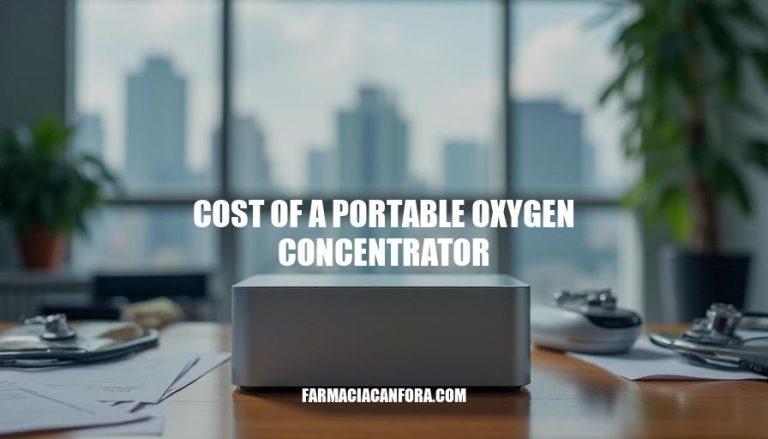


A portable oxygen concentrator is a device that pulls oxygen from the air and gives it to people who need extra oxygen. It’s really helpful for people with breathing problems like COPD or pulmonary fibrosis, because it lets them stay mobile while keeping their oxygen levels up.
The cost of a portable oxygen concentrator is influenced by several factors, including brand, model, features, and additional accessories. Each of these factors contributes to the overall pricing and can impact the buyer’s decision-making process.
The brand of a portable oxygen concentrator can significantly affect its cost. Well-known brands often charge a premium for their products due to their established reputation for quality and reliability.
For example, brands like Philips Respironics and Inogen are known for their high-quality devices, which can be more expensive compared to lesser-known brands.
Different models of portable oxygen concentrators come with varying features and specifications, which can influence their price. Higher-end models with advanced technology and better performance typically cost more. For instance, models with dual flow modes (continuous and pulse flow) and higher oxygen output levels are usually priced higher than basic models.
The features of a portable oxygen concentrator play a crucial role in determining its cost.
Some key features to consider include:
Oxygen Output: Higher oxygen output (measured in liters per minute) can increase the price.
Flow Modes: Continuous flow models provide a constant supply of oxygen, while pulse flow models deliver oxygen in bursts, which can be more battery-efficient.
Battery Life: Longer battery life allows for extended use without recharging, which can add to the cost.
Weight and Portability: Lighter and more compact models are often more expensive due to the advanced technology required to achieve portability.
Noise Levels: Lower noise levels can make the device more comfortable to use, especially in quiet environments, and may increase the price.
The cost of a portable oxygen concentrator can also be affected by the need for additional accessories. These may include:
Carrying Cases: Protective cases for transporting the device.
Extra Batteries: Additional batteries for extended use.
Tubing and Masks: Different types of tubing and masks for comfort and ease of use.
Warranties and Service Plans: Extended warranties and service plans can add to the overall cost but provide peace of mind and protection against potential issues.
When evaluating the cost of a portable oxygen concentrator, buyers should consider their specific needs and usage patterns. It’s important to assess the required oxygen output, preferred flow mode, battery life, and portability.
Additionally, checking insurance coverage and potential out-of-pocket expenses can help in making an informed decision.
By understanding these factors, buyers can better navigate the market and choose a portable oxygen concentrator that meets their needs and budget.
A portable oxygen concentrator is a valuable device for individuals with breathing problems, allowing them to stay mobile while maintaining healthy oxygen levels. However, the cost of these devices can be influenced by several factors, including brand, model, features, and additional accessories.
The brand of the portable oxygen concentrator significantly affects its price, with well-known brands like Philips Respironics and Inogen charging a premium for their high-quality products. The model also plays a crucial role in determining the cost, with higher-end models featuring advanced technology and better performance typically being more expensive.
Key features such as oxygen output, flow modes, battery life, weight and portability, and noise levels can also impact the price of the device. For example, higher oxygen output, longer battery life, and lighter weight can increase the cost. Additionally, the need for additional accessories like carrying cases, extra batteries, tubing, and masks can add to the overall expense.
When evaluating the cost of a portable oxygen concentrator, buyers should carefully consider their specific needs and usage patterns. It’s essential to assess the required oxygen output, preferred flow mode, battery life, and portability. Checking insurance coverage and potential out-of-pocket expenses can also help in making an informed decision.
In conclusion, understanding the factors that influence the cost of a portable oxygen concentrator is crucial for buyers to make an informed decision. By carefully evaluating their needs and budget, individuals can choose a device that meets their requirements while staying within their financial means.